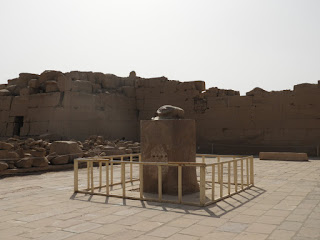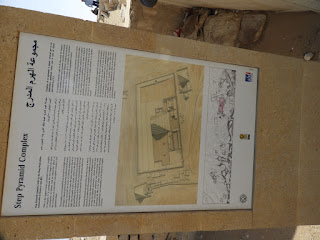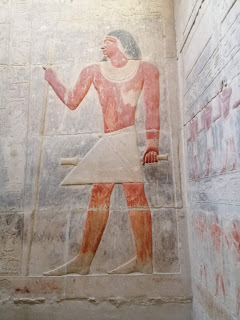It was a lovely night in the
sleeper train. We had two meals, dinner and breakfast and the beds were
comfortable. I had a room for myself. Only issue was that there was no way of
getting a wash.
The train staff was very
friendly, uncle Aladdin attended to all our needs and made sure that he gave
prior notice about an hour ahead before we reach the Luxor station.4
We were able to see the sunrise
through the windows. We finally packed our bags and got down from the Luxor
station around 6 in the morning where a cab was waiting for us to drop us at
the port where we were to take our cruise which was going to be our abode for
the next 4 days.
The Check-in time was 2:00 p.m.
therefore we had to wait on the deck till our rooms were ready. The inside was
absolutely beautiful. It was not a luxury one but had all the comforts needed.
Luckily our guide got our room done by 12:00. So, we had a small nap, a quick
bath and went out to visit the two temples that were planned in the itinerary.
The first was the Karnak temple.
This is the largest temple ever constructed in the history of mankind. This is
dedicated to the god Amun, Mut and Khonsu.
The temple of Karnak was known as Ipet-isu—or “most select of places”—by
the ancient Egyptians.
It is the largest religious
building ever made, covering about 200 acres (1.5 km by 0.8 km), and was a
place of pilgrimage for nearly 2,000 years. The Hypostyle hall, at 54,000
square feet (16,459 meters) and featuring 134 columns, is still the largest
room of any religious building in the world. In addition to the main sanctuary
there are several smaller temples and a vast sacred lake – 423 feet by 252 feet
(129 by 77 meters). Construction at Karnak started by 4,000 years ago and
continued up until the time the Romans took control of Egypt, about 2,000 years
ago. Each Egyptian ruler who worked at Karnak left his or her own architectural
mark.
The Egyptians believed that
towards the end of annual agricultural cycle the gods and the earth became
exhausted and required a fresh input of energy from the chaotic energy of the
cosmos.
To accomplish this magical
regeneration the Opet festival was held yearly at Karnak and Luxor. It lasted
for twenty-seven days and was also a celebration of the link between pharaoh
and the god Amun. The procession began at Karnak and ended at Luxor Temple, one
and a half miles (2.4 kilometres) to the south.
The statue of the god Amun was
bathed with holy water, dressed in fine linen, and adorned in gold and silver
jewelry. The priests then placed the god in a shrine and onto the ceremonial
barque supported by poles for carrying. Pharaoh emerged from the temple, his
priests carrying the barque on their shoulders, and together they moved into
the crowded streets. A troop of Nubian soldiers serving as guards beat their
drums, and musicians accompanied the priests in song as incense filled the air.
If there’s one term that can be
tied to Egypt is colossal. Wherever you travel, all the monuments, structures,
architecture are of massive size. Karnak is such an example. You could stand
under the columns and feel the awe and beauty of the marvels that were done by
the ancients. I passed through the
columns several times looking up at the sky through the capitols as if one was
travelling through the past.
Beside the lake there was a
statue of scarab beetle who is associated with god Khepri. It is believed that
if you go 7 times in the anticlockwise direction, any of your wishes would come
true. We also did the same, and let’s see whether mine would come true.
Another interesting item was the obelisk that is present there. At present, only three obelisks remain here as the complete form. But there had been about 20 obelisks in this Great Temple of Amun, in ancient Egyptian times.
There’s a lot to write about the
temple. There are many stories that unravel secrets of the past. For a keen
scholar, Karnak itself remains a place of great study and importance. We ended
our tour there looking back many a times at the marvel and took the van to our
next stop for the day, The Luxor Temple.












































































